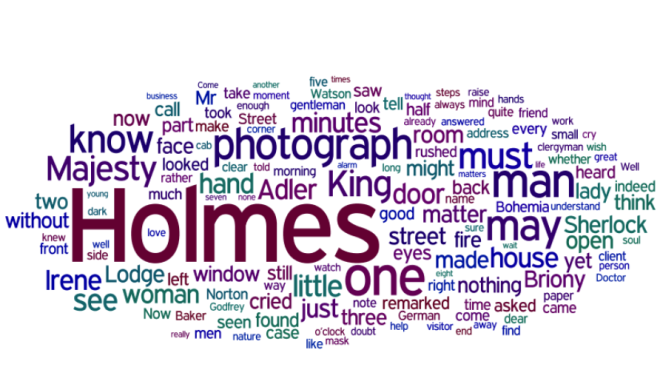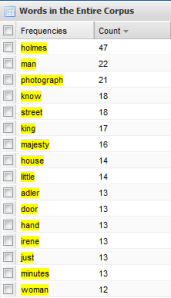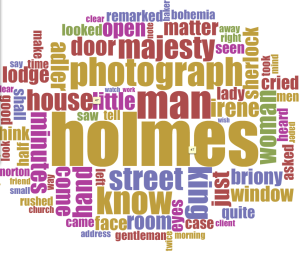Before I created my own word cloud, I read the two blog posts regarding this visualization aid, and although one went more in depth about different websites where word clouds can be made, the blog “Word Clouds Considered Harmful” (well, the title says it all) had a very negative attitude toward these fun and light-hearted artistic creations. However, ironically enough, when I was searching for the definition of a word cloud in Google it came up as “An image composed of words used in a particular text or subject, in which the size of each word indicates its frequency or importance.” I found this interesting because in the negative post about word clouds Harris talks about how the size of a certain word should not emphasize the importance of it; but Google seems to think otherwise. Although I do not necessarily agree with Harris, I do believe that before people engage in making word clouds, they should read and understand the text that is being artistically manipulated. With this being said, more people would stray away from using only a word cloud to understand texts, and focus more on comparing their recent finds along with the finds of a visual aid.
Regardless of everyone’s opinions on word clouds and the significance in making them, I actually enjoyed customizing my word cloud for my favorite Sherlock Holmes story, A Scandal in Bohemia. At first I had trouble with Wordle (because of Java) and I decided to try Voyant. However, after seeing what my word cloud looked like with Voyant, I realized I was more of a Wordle fan. When I created my first word cloud with Voyant, many of the words that probably should have been emphasized, were not. For example, Holmes, Adler, and women were not even included in the word cloud. Secondly, I found that a lot of common words had the most emphasis and when I tried to take those out, it didn’t go as planned. Therefore, I tried Wordle again and after downloading Java, I copied and pasted my text and created the word cloud pictured below.

As I played around with Wordle, I found that I enjoyed being able to customize my visualization based on my preferences. As I kept clicking ‘randomize’, I gained insight on what shape I wanted my word cloud to be, the positioning of words, the color scheme, and the font. After it was all said and done, I chose to create my own color palette because I felt like the basic palettes were overused-so why not create my own? When I created my palette I chose dark colors so that words would clearly standout. My colors ranged from different shades of purple, a dark blue, a red wine, and a dark green, just because I found those most appealing. After choosing the specific colors I wanted, I chose to view the different fonts. After viewing various ones, I wound up using a font that made all the words neat and legible.
When I started to analyze my word cloud based on my prior knowledge from reading A Scandal in Bohemia, and understanding what word clouds are used for, I pretty much agreed with the words that mad most emphasis in the word cloud, versus the words that did not. For example, Holmes was obviously the most emphasized because he is a main character not only in this story, but also in all Sherlock Holmes stories (no pun intended). Another word that had emphasis was photograph. As readers know, a major theme in the story is the lost picture and is the main cause of stress for the king or ‘majesty’ (also emphasized), so it makes sense that it is one of the larger words. One thing that I did find interesting was how woman was not emphasized. I understand that ‘woman’ may not have been said a lot in the story, however it is a major representation of what Holmes thinks Adler to be and readers should know of regardless.
What did you all think of word clouds? Yay or nay?

